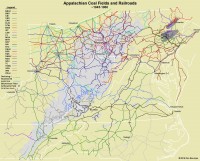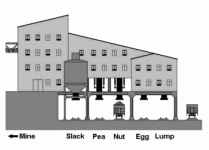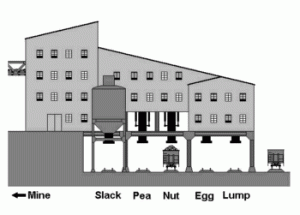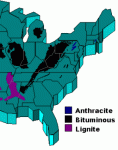Evolution of Appalachian Railroads 1945-2005

The evolution of coal-hauling railroads in the Appalachians is fascinating, especially over the last 60 years. Six years ago, Appalachian Railroad Modeling published its first map of the coal fields and railroads circa 1950. While it was informative, these four maps go well beyond the original to show how Appalachian railroading changed over time, and together they tell a fascinating story of growth, downsizing, consolidating and rebirth. Based on the resources I had, it was difficult to tell when certain lines were abandoned, especially in the 1945 and 1970 maps, so many of the dashed lines in the 1945 map may have been active, and many of the dashed lines in the 1970 map may have been abandoned decades before. I learned … Read more







